SJTU Design Illuminates the 2025 Shanghai International Flower Show | Three Major Venues, Five Gardens Lead the Floral Exhibition

The 2025 Shanghai International Flower Show opened at Xintiandi in Huangpu District on April 18. This edition of the flower show features two main venues at the Shanghai Botanical Garden and Huangpu Xintiandi, with five sub-venues located in Pudong New Area, Xuhui District, Fengxian District, Lingang Special Area, and Shanghai Riverside Forest Park.
Venue Names | Garden Titles | Opening Hours |
01 Huangpu Main Venue | Brain Garden | 4/18-5/11 |
IRIS CAFE | ||
02 Pudong Sub-Venue | Qiantan Friendship City Park Renewal Design | Permanent |
03 Fengxian Sub-Venue | Pinecone Sensory Garden | 4/28-5/22 |
Metamorphosis·Siyuan Butterfly Garden |
01 Huangpu Main Venue — Where Blooms Begin: SJTU's Healing Power
Brain Garden: Unlock the Healing Journey of Gardens
Faculty-Student Design Team: Wang Ling、Li Zhongwei、Zhang Nan、Lin Sixu、Xun Hongtao
Technical & On-Site Support Team: Zhang Liqing、Che Shengquan、Xun Hongtao、Lin Sixu、Jin Yiding、Li Xiaotong、Lan Xingyue、Pu Jingyun、Wang Yueyan、He Chenjing、Zhang Shuoyu、Wei Minghao
Photography Team:Yu Wenjie、Xun Hongtao
(视频来源:CCTV2-中央电视台财经频道 Video Source: CCTV-2 Finance and Economics Channel, China Central Television)
The “Brain Garden” is located at Taiping Lake in Xintiandi. This meticulously crafted installation by faculty and students from the Department of Landscape Architecture presents a two-pronged approach to urban emotional healing — it takes the emotional regulation area of the human brain as its prototype and integrates brain science and psychology into the landscape design, creating a "spiritual oasis" for tourists. This pioneering work has secured the Gold Award at the Shanghai International Flower Show!
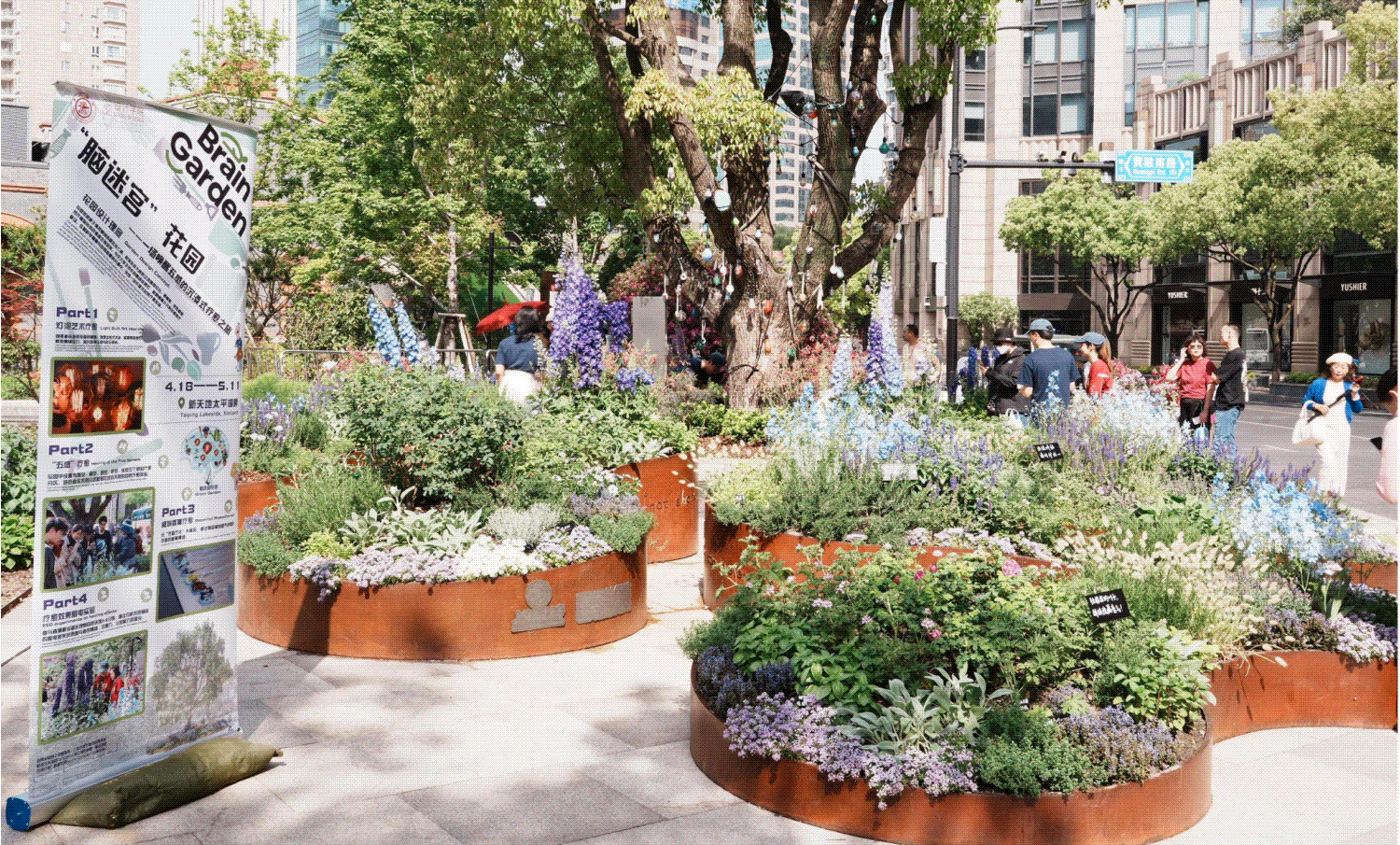
The “Brain Garden” introduces five distinct experiential pathways to urban healing, establishing itself as a highly popular Emotional Wellness Destination at the 2025 Shanghai International Flower Show. As a core member of the design team, Dr. Zhang Nan, Associate Researcher at the Department of Landscape Architecture, implemented the innovative “Sensory Narrative Design” methodology throughout the creative process.
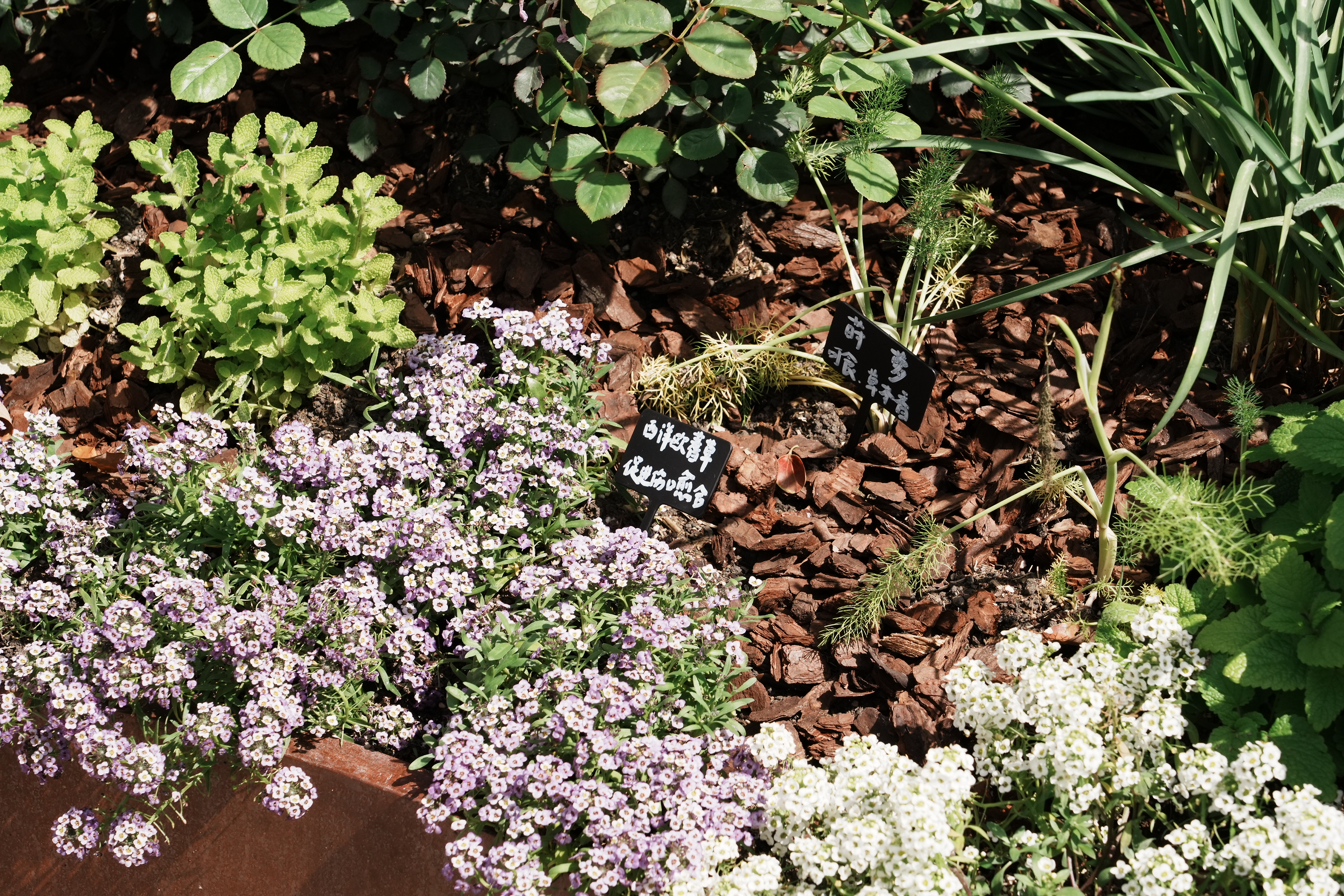
Experience 1: Five-Sensory Healing — Nature's Gentle Prescription
Every design element in this garden conceals sensory orchestrations—where olfactory, tactile, visual, and auditory symphonies immerse visitors throughout their journey. Playful instructional cues spark participatory engagement, transforming observers into active explorers of this living therapeutic tapestry.

Experience 2: Neuro-Therapeutic Experiment — Visualizing Anxiety through Brainwaves
The garden's most compelling feature is its Neuro-Therapeutic Experiment: Participants wear Emotiv EPOC+ portable EEG headsets while meditating amidst nature for 3-5 minutes. The device analyzes key frequency bands of brain waves—alpha waves (relaxation), beta waves (focus), and theta waves (creativity)—to generate real-time emotion neuro-maps dynamically projected onto interactive screens.

Experience 3: Luminaire Therapy — Translating Emotions into Light
Over 100 hand-illustrated luminaires adorn the trees—each a "sentimental canvas" crafted by SJTU students. Visitors release emotional burdens and enhance self-awareness through tactile interaction with this suspended artwork, while shared moments of contemplation foster unexpected social connections within the garden’s glow.
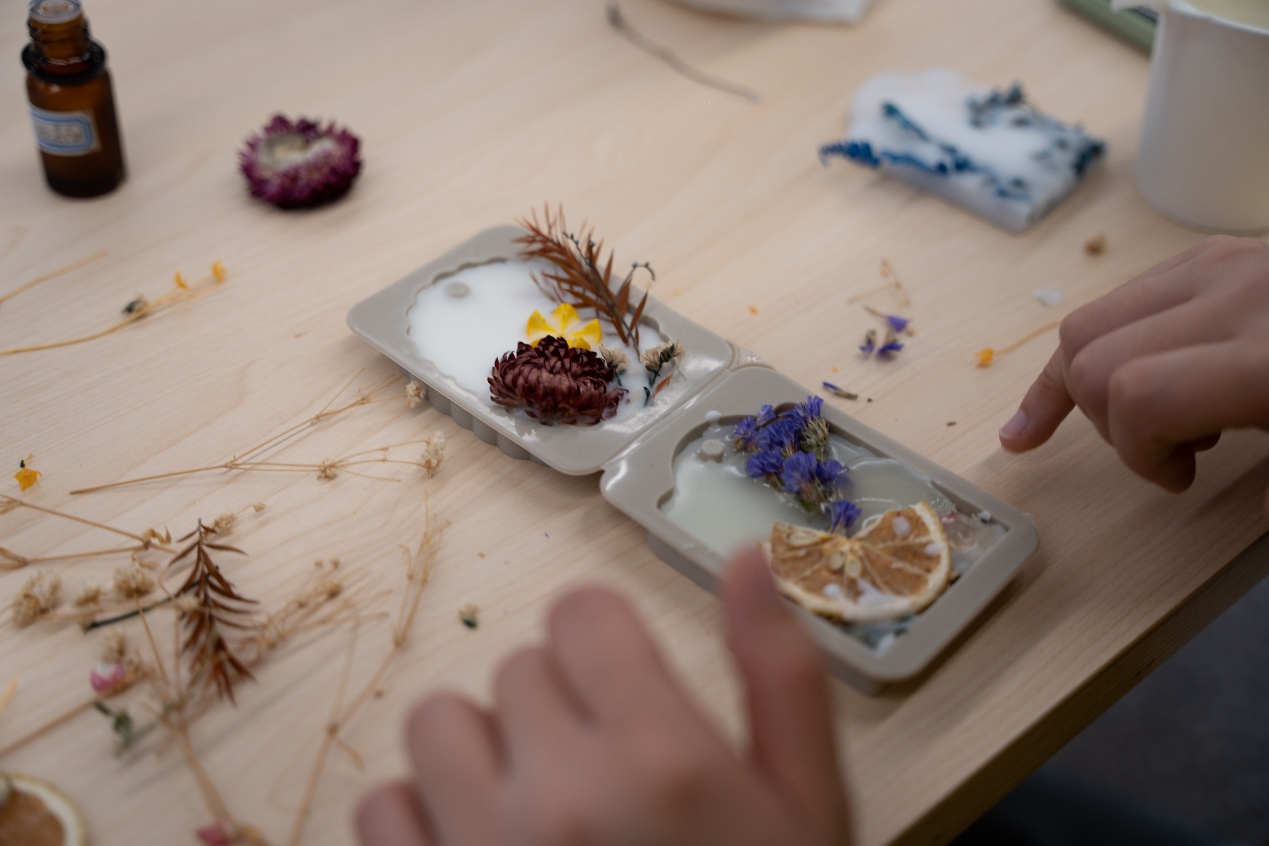
Experience 4: Phyto-Aromatherapy Research — SJTU's Scientific Romance with Scent
At the garden's heart, handcrafted aromatic plaques dangle from ancient trees—sustained-release vessels blending cedarwood and sweet orange essences, meticulously engineered by SJTU researchers. The Brain Garden cultivates 50+ botanical species, with 30+ aromatic varieties scientifically validated for stress alleviation. Visitors engage in immersive olfaction therapy: inhale to ease fatigue, or gently stroke leaves to trigger biogenic volatile release, forging profound multisensory bonds with this living laboratory.

Experience 5: Narrative Co-Creation — Illuminating Shared Humanity through Words
Visitors engage in interactive storytelling: collecting limited-edition "Phytotherapy Card Decks" featuring designer-curated floral symbolism on the front, with scientifically calibrated "Neuro-Horticultural Index" data on the back. Meanwhile, sentimental luminaires suspended throughout the garden beam with SJTU students' anonymous empathy narratives—transforming personal vulnerabilities into collective radiance that fosters profound social connection through the alchemy of the written word.
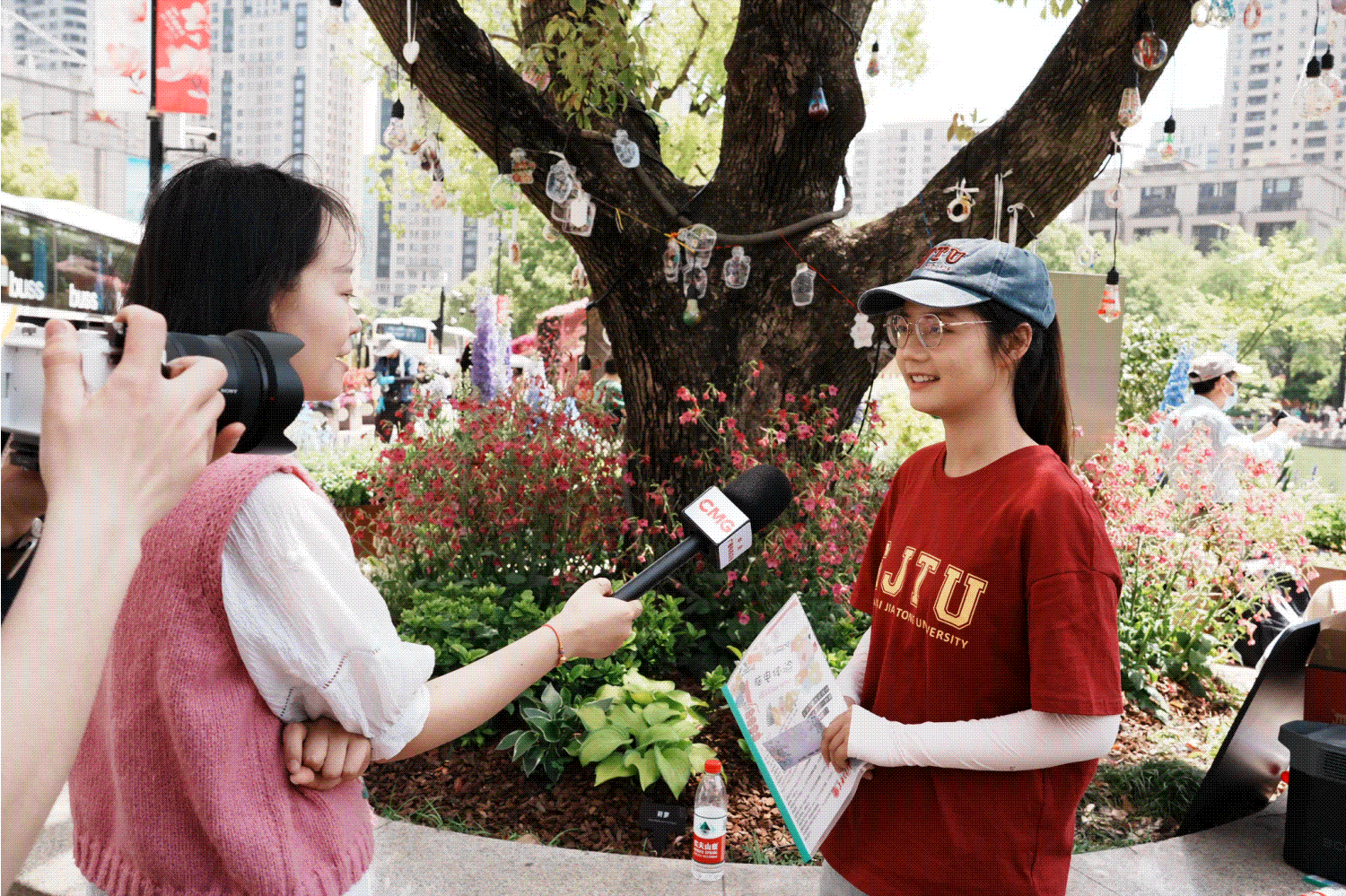
(学生团队接受中央广播电视总台等多家媒体采访及现场为游客讲解设计巧思The student team was interviewed by multiple media outlets, including China Media Group, and provided on-site explanations to visitors about the ingenious design concepts)
The "Brain Garden" transcends garden boundaries, evolving into a pioneering social experiment in urban-emotional healing.
IRIS CAFE:"Eye-Catching Star" Debuts at Xintiandi
SJTU Design Team | Li Zhongwei
(©️李中伟 ©️Li Zhongwei)

Stepping into "Iris Cafe," one feels as if entering a world enveloped in a dreamy blue-purple hue. This garden, meticulously crafted by Li Zhongwei, an associate professor in landscape architecture and founding partner of Lab D+H Shanghai, features the iris flower as its centerpiece, skillfully layering various species and forms of blue-purple flowers. With the shifting sunlight, the flowers display a unique charm, sometimes vibrant and sometimes hazy, offering visitors an immersive visual feast. At the center of the garden stands a striking large rotating installation named "Iris." Made of mirror-finish stainless steel, it resembles a gigantic silver eye. As the installation slowly rotates, its reflective surface vividly mirrors the surrounding colorful iris flowers. The flower shadows flow and intertwine with the motion, creating a dreamlike dynamic visual effect that captivates onlookers.

(图片转载自:微信公众号“上海黄浦”,李中伟 Image reproduced from: WeChat public account "Shanghai Huangpu," by Li Zhongwei)
Regarding the garden's name, Li Zhongwei explains:: "Both the pupil and the iris flower share the name 'Iris' in English. The iris is vibrant in color, just like the iris in the eye, which is rich in hues. Both evoke a sense of diversity and beauty. We've fused these twin inspirations into a landscape manifesto for ocular well-being, urging visitors to cherish vision health. It's profoundly meaningful that artistic beauty can simultaneously spread positive energy."
Since its debut at the 2025 Shanghai International Flower Show, the Iris Cafe Garden has captivated the public with its mesmerizing visuals. Dubbed affectionately by netizens as "Xintiandi's Eye-Catching Star," it has emerged as one of the exhibition's undisputed must-snap spots.

02 Pudong Sub-Venue — Floral Hub at Qiantan's Heart: SJTU Convergence Power
The Pudong sub-venue has opened to the public, featuring integrated floral spaces and public realm renewal as its core offerings. The redesign of Qiantan Friendship City Park, spearheaded by Prof. Li and his team, implements comprehensive planning and landscape execution across key nodes including the Qiantan Riverside sector, Cedar Cone Playground, and Floral Bridge.

(©️李中伟 ©️Li Zhongwei)
Qiantan Riverside Renewal Design
SJTU Design Team | Li Zhongwei
The Qiantan Riverside renewal design strategically dismantles previously enclosed spatial configurations. Through interventions like expansive lawns, contoured landforms, and riverfront amphitheater steps, it reorients sightlines and movement pathways toward the Huangpu River. Prof. Li masterfully leverages topographic variation and spatial permeability to revitalize this once functionally limited park, transforming the waterfront into an integrated urban living zone.
Where obscured river vistas existed before, citizens now unwind on grassy slopes and contemplate the cityscape from terraced vantage points—reclaiming the Huangpu as Shanghai's dynamic civic stage.
Floral Bridge Spatial Design
SJTU Design Team | Li Zhongwei
The park's signature structure, the Floral Bridge, emerges from a landmark collaboration between Prof. Li and Professor James Hitchmough—Sheffield University's globally renowned pioneer of New Naturalistic Planting Design. Where flora forms bridges and nature becomes the medium, this living infrastructure integrates native adaptive species with symphonic seasonal sequencing, manifesting a multifunctional ecological interface pulsating with biodiversity through cyclical rhythms. This Sino-British venture marks a significant advancement in public planting design philosophy.
These innovations not only exemplify Pudong's groundbreaking integration of urban renewal with ecological regeneration, but also materialize the "People-Centric City" vision—seamlessly weaving wilderness into the urban fabric.
Cedar Cone Playground
SJTU Design Team | Li Zhongwei
In crafting Cedar Cone Playground, Li Zhongwei preserved the native dawn redwood groves as ecological anchors, honoring the site's biological heritage and collective memory. Inspired by the tree's distinctive cones, he sculpted an intergenerational commons beneath the canopy—breathing new life into once-static woodlands. From children's adventure mounds to elders' meandering paths and youth gathering lawns, spaces unfold organically underneath dappled shade.
This revitalized woodland, once overlooked, has been restored to Shanghai's public realm through thoughtful renewal. Now a daily stage for human-nature encounters, it embodies how designed wilderness can reclaim its place in urban consciousness.
03 Fengxian Sub-Venue — Bloomtime in South Shanghai: SJTU Research Power
The Fengxian sub-venue centers around thematic gardens and the Student Garden Festival. As a guiding institution, SJTU College of Design conceived and built two landmark installations: the Pinecone Sensory Garden and Metamorphosis·Siyuan Butterfly Garden. These projects catalyzed two SJTU Student Innovation Initiatives, spawning cultural derivatives and science outreach programs that fuse industry, academia, and research into an organic ecosystem.
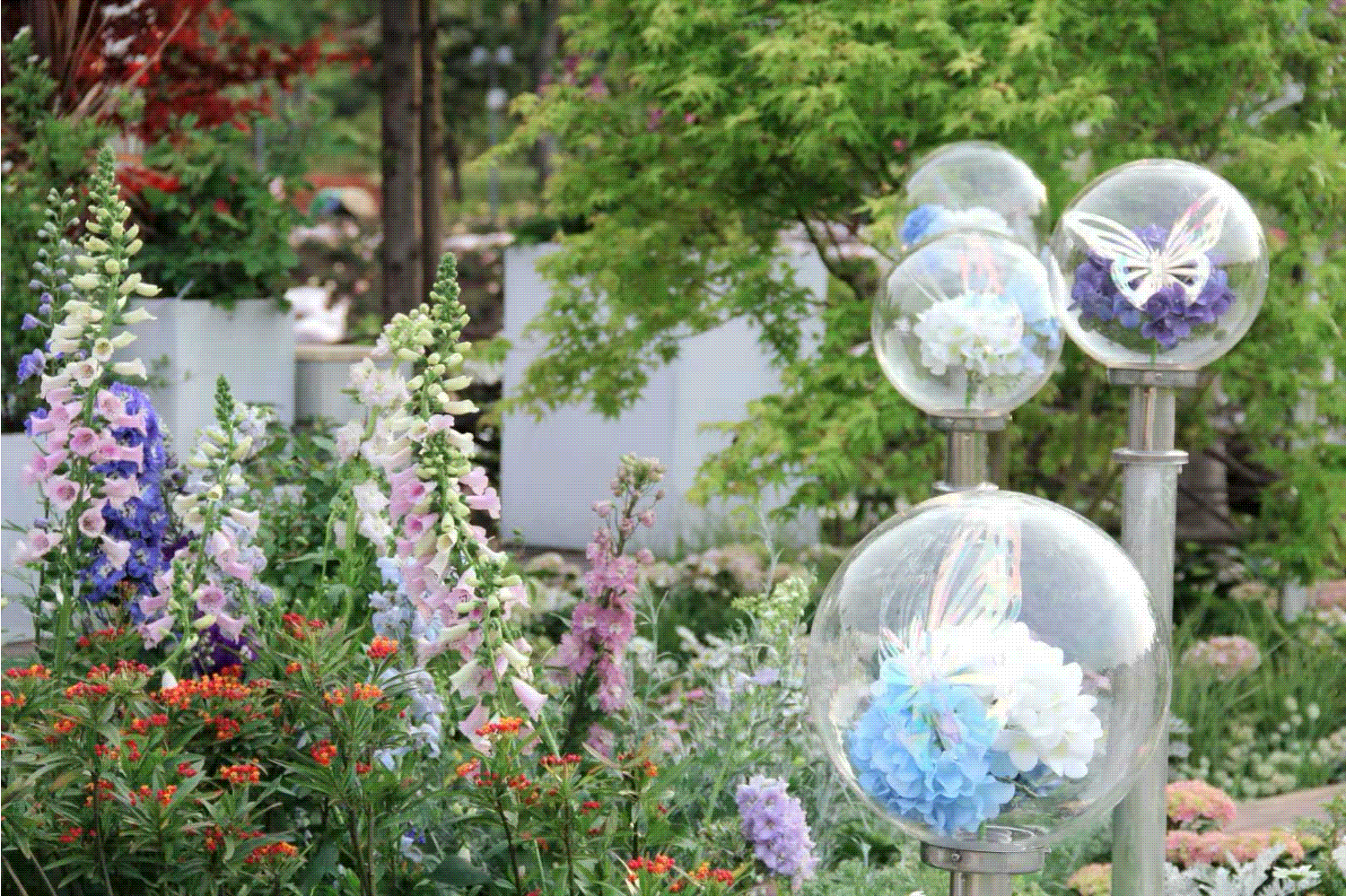
(图片来源:参展团队Image source: Exhibition team)
Pinecone Sensory Garden: Crafting a New Realm for Five-Sensory Healing
Faculty-Student Design Team:Chang Xiangqi、Li Xiaotong、Zhang Shuoyu
Scientific Advisory Panel :Che Shengquan、Wu Yani、Zhang Liqing、Chen Guanqun、Zhang Nan
Curatorial Synergy Team:Chang Xiangqi、Liu Ziying、Song Jiayang、Li Yujia、Xie Beilannan、Wu Junchen
The Pinecone Sensory Garden transforms an existing pinecone-shaped structure into an immersive sanctuary, curating a multisensory ecosystem through interior botanical installations, interactive devices, and aromatic journeys—where biodiversity thrives alongside aromatherapy within a five-dimensional green haven.
Metamorphosis·Siyuan: Deciphering SJTU's Heritage in the Butterfly Garden
Supervising Faculty: Chang Xiangqi、Chen Guanqun
Student Team: Chen Minghui、Yan Mengling、Shen Manjuan、Lu Xinyi、Deng Hanxi、Wu Chenhong
Construction Crew:Chang Xiangqi、Chen Minghui、Yan Mengling、Shen Manjuan、Lu Xinyi、Deng Hanxi、Wu Chenhong、Wu Guanqiu
Planning Unit: Chang Xiangqi、Liu Ziying、Song Jiayang、Li Yujia、Xie Beilannan、Wu Junchen
This Garden interweaves lepidopteran metamorphosis with SJTU's institutional evolution. The design team masterfully deploys living greenery, acrylic orbs, bronze lepidoptera sculptures, QR-coded plaques, and kinetic installations to chronicle the university's transformative journey from Nanyang College to a global academic leader. SJTU design students executed the garden's hands-on creation—from conceptual sketches and material procurement to hands-on construction—completing the full cycle of landscape realization.
·"Symposium on Dancing with Nature, Resonating with Life" — Floral Visions as Catalysts for Exploring Emerging Forces in Landscape Innovation
On the afternoon of April 18, the 2025 Shanghai International Flower Show hosted its thematic symposium "Dancing with Nature, Resonating with Life" at Sinan Mansions. Presided over by Professor Che Shengquan from the Department of Landscape Architecture, the event featured a keynote address by Department Chair Wang Ling on "Landscape Perception and Human Well-being," unveiling the scientific foundations and construction insights behind the Brain Garden. Prof. Che further ignited dialogue with designers and scholars through his presentation "Pathways to Harmonious Coexistence Between Humanity and Nature in Urban Cores," exploring critical themes including:
·Sustainable urban renewal amid demographic shifts
·Integrating ecological systems with cultural cityscapes
·Collaborative governance through multifunctional spaces
·Gender-inclusive perspectives on urban greening

(图片转载自:微信公众号“黄浦绿化”Image reproduced from: WeChat official account "Huangpu Greening")